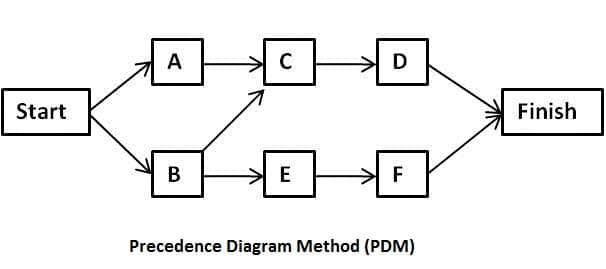The Project Management Institute, the leading global nonprofit organization for professional project managers, listed in their 2018 report that 93% of surveyed companies used standardized project management practices. Managers rely on them in various industries from construction and engineering to software and product development.
No matter the industry or size of your company, everyone can benefit from learning about critical path management and how it could enhance their business.
Boost your team’s efficiency with Hubstaff's productivity tools
What is critical path management?
Critical path management is one of the main concepts in project management, with roots going back to the early 1940s.The method allows you to indicate the most important tasks in a project that affect its successful delivery. Consequently, all the critical tasks make up the critical path.
In 1963, the Harvard Business Review was one of the first business publications to mention the emerging system, saying:
“Recently added to the growing assortment of quantitative tools for business decision making is the Critical Path Method—a powerful but basically simple technique for analyzing, planning, and scheduling large, complex projects. In essence, the tool provides a means of determining which jobs or activities, of the many that comprise a project, are “critical” in their effect on total project time, and how best to schedule all jobs in the project in order to meet a target date at minimum cost.”
In other words, the critical path in project management shows the longest sequence of tasks necessary to complete a plan with a minimum amount of time.
Once you know which tasks are crucial to getting the job done, and the quickest way to finish them, you’ve taken the first step to delivering a successful project.
It’s a double-edged sword, however. If your critical tasks are vulnerable to delays, then you can just as easily fall behind and go overtime and over budget.
Take a simple example. Say you need to buy a new TV set. What are the essential steps?
- Conduct research to figure out trends, prices, and what local or worldwide online stores offer.
- Choose a model.
- Pay for it either online or offline.
- Pick it up or have it delivered.
Of course, this process can consist of many more steps if you choose: shopping around for the best offer, asking friends what TV they have, trolling Reddit for TV reviews, etc.
The core difference between the first four actions and the longer potential list is that you can’t buy a TV set without those first. It makes them critical. Other actions can help make the decisions more nuanced or strategic, but they’re not obligatory.
Here comes another crucial aspect of the method: actions should be in a certain sequence and dependent on each other.
You can’t buy a TV until you choose one, right?
Subscribe to the Hubstaff blog for more project management tips
Importance of critical path in project management
The importance of the critical path in project management is well known: it’s a necessary part of Project Management Professional Certification, the most important industry-recognized certification for project managers.
To fully grasp the concept, you need to also be familiar with the term “float” and know why it’s a core part of the method.
The float or slack is an amount of time a task can be delayed by causing no delays in other dependent tasks and the whole project. To successfully deliver a project, critical tasks should have zero floats.

“Zero float” means that you can’t delay a critical task, as it will cause further delays by pushing back dependent tasks and then jeopardize the overall project.
At the same time, if you want to build in buffer room into your timelines, you can add in some float. Choose the unit of time (it could be hours, days, weeks, etc.) and then the number of times it can happen before the next task would be delayed. If your float is set to days and you add five floats to your critical path, that means you can delay by five total days before you’ll have affected the delivery date for the project.
If you see a task, perhaps one that’s particularly complex or time-consuming, and want to add float to it then you should remove it from the critical path. That way if the anticipated delay to that task comes true, you won’t be harming the timely delivery of the overall project.
When planning, project managers should identify which tasks have absolutely no flexibility. That is why the critical path method works so well in industries where there are perfect project plans with deadlines that have precise dates and cannot be delayed.
Examples of critical path
Shopping for a TV was fun, but let’s take a more complicated example of how critical path can be used with some illustrations.
If you draw a manual path, you have to work with the Precedence Diagram Method that uses Activity-on-Node (AON) diagramming technique. This is how it looks in a general way.

Note: rectangles include tasks, arrows show dependencies.
Let’s take the critical path method example with the solution. Imagine you need to build a house. Sure, there are hundreds of small tasks involved but for this example, we’ll take some common key steps, identify which are critical and which aren’t, and how long it will take to complete them.

From this construction example, we see that there are two paths here: a 9-day path and a 40-day path.
But the 40-day path is the quickest way to complete the project.
Sure, 9 days is fewer than 40 days. But the critical path contains the crucial steps that are foundational (in the case of a house, literally) to getting the project completed. You can have a house without faucets, but you can’t have a house without walls.
How to create a critical path
To create a critical path, follow these simple steps.
1. Break your project into tasks
With the help of the work breakdown structure, divide your entire project into manageable pieces that correspond to key deliverables.
2. Define duration and estimate the amount of time for each task
You need to know how much it takes to complete each task in your project.
3. Connect dependent tasks
Dependencies are key elements in critical path project management. To build the correct order of your tasks, you should designate all possible predecessors. That means you need to link every dependent task to the tasks coming before it that need to be completed before the next stages can begin.
There are four types of dependencies:
- Finish to Start (FS)
- Finish to Finish (FF)
- Start to Start (SS)
- Start to Finish (SF)
4. Identify the overall critical path
You can determine work with the critical path in two ways: An easy one and a difficult one.
A difficult way implies all the manual work with networked diagrams, float, and early start/early finish dates as well as late start/late finish dates.
An easy way to create and calculate a critical path is to delegate it to special software that does all the work for you. All you need is to follow the above-mentioned three steps and rely on tools to make your critical path analysis for you.
It’s a good idea to steer clear of googling “how to calculate critical path in Excel.” It’s a great tool for lots of things, but calculating a quality critical path isn’t one of them.
Identifying critical tasks with critical path software
Many time-consuming manual actions that managers did years ago to create a critical path are better off left in the past.
There are dozens of savvy project management software solutions that can help you with your critical path analysis with a few clicks.
For the critical path beginner: Hubstaff Tasks
Hubstaff Tasks is our Agile project management platform, allowing you to visualize project management with Kanban-style custom workflows that keep your team on the same page as you move important tasks through various stages of a project. Learn more about Agile project management in our simple guide here.
With Hubstaff Tasks, you can easily follow these steps to create a critical path:
- Create tasks.
- Set duration and estimation.

Take critical path planning to the next level: GanttPRO
GanttPRO online Gantt chart software offers Gantt charts for identifying more complex and sophisticated critical paths for your projects.
As in the case with Hubstaff Tasks, GanttPRO allows:
- Breaking your project down into smaller tasks.
- Setting duration and estimation for tasks.
- Connecting dependent tasks.
To create a critical path in GanttPRO, simply switch this option on in the settings of your project. The critical path will be highlighted in red.

Now you’re ready to use the critical path method to take your project management to the next level.
Creating a critical path manually can be challenging and requires deep professional knowledge to do it really well. Luckily, there are some cutting edge software tools that make it simple and effective to take the core concepts of critical path management and use them to take your project management planning to the next level.
About the author

Andrew Stepanov has been discovering and describing project management tools since 2017 to realize what works best to implement it in GanttPRO, online Gantt chart software he works on together with a great team. When he is not searching and writing, he spends time with his family, listens to rock music or watches sports games.
Most popular
The Fundamentals of Employee Goal Setting
Employee goal setting is crucial for reaching broader business goals, but a lot of us struggle to know where to start. American...
Data-Driven Productivity with Hubstaff Insights: Webinar Recap
In our recent webinar, the product team provided a deep overview of the Hubstaff Insights add-on, a powerful productivity measurem...
The Critical Role of Employee Monitoring and Workplace Security
Why do we need employee monitoring and workplace security? Companies had to adapt fast when the world shifted to remote work...
15 Ways to Use AI in the Workforce
Whether through AI-powered project management, strategic planning, or simply automating simple admin work, we’ve seen a dramatic...





